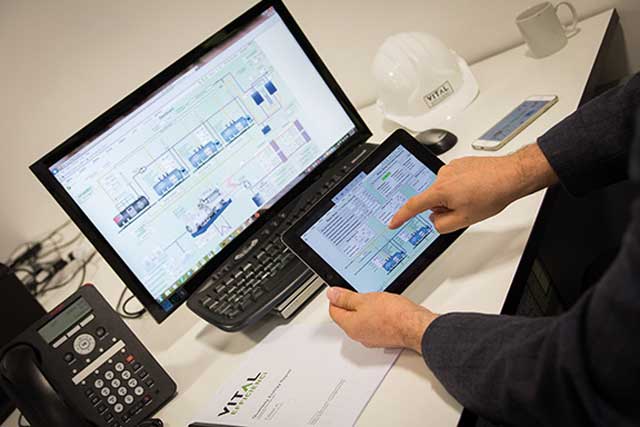
For the effective management of resources, merging operational strategies such as maintenance and energy consumption can prove beneficial, says Mike Loughran, Rockwell Automation chief technology officer for the UK & Ireland
Energy management and maintenance are not traditionally connected, but equipment performance and energy consumption programmes can work together to effectively maintain machines and optimise energy use.
To merge these two strategies, finding common ground is key, and this comes down to predictive monitoring.
Rather than just reacting, plant managers who implement predictive strategies can actively examine equipment to check a machine is in good health. For energy management, active monitoring can help optimise consumption. As any manager understands, inadequately maintained equipment is a major cause of energy waste. Combining the strategies can substantially reduce overall operating costs and boost productivity.
Why a predictive programme makes sense for energy
When viewed as a production resource, energy can be managed as effectively as raw materials, equipment or other production assets, leading to decreased costs and increased productivity.
The process for creating a predictive strategy for energy management follows the same three steps as any maintenance programme: monitor, analyse and control. Once all three steps have been taken, manufacturers will start to sustain gains.
Manufacturers need to know how much energy is being used, as well as where and when. Having established that, they need the ability to act on that information.
At the heart of an effective monitoring programme is a network of digital power-monitoring devices that capture and communicate information. Monitored systems provide the foundation for the accurate collecting and reporting of energy data. With this data, plant managers can understand the true base load or fixed portion of energy consumption.
The second step, data analysis, enables plant managers to make better decisions about controlling energy costs, such as by reducing consumption at peak demand.
Energy management software should act as the centralised database for all accessible energy parameters in a plant or over multiple sites. The software will help those on site see problems that might exist and lead them to the proper corrective actions. The same software also allows manufacturers to model their energy profiles by measuring peak demands and power-quality parameters, determining demand patterns and calculating energy costs.
The key to analysing the data relies on an integrated network architecture which allows users to deliver energy information across the enterprise.
Finally, control. As in a predictive maintenance strategy, after analysing the data plant managers can develop their action plan and install automation systems to capture energy savings with a control system. For example, plants that want to maintain a more consistent level of energy use over time can use a load-management system to monitor the electrical consumption of selected equipment, and turn it on and off to minimise peak demand.
How to merge predictive maintenance and energy management strategies
The predictive mindset creates an environment in which plant managers, engineers and operators can work closely with management to create business rules that effectively merge maintenance and energy strategies. By coming armed with data from the plant floor that clearly shows the profitability margins, the two groups can work together to develop a set of effective practices.
By implementing a predictive maintenance strategy and applying that to energy consumption, organisations will see longer-term savings for mission-critical machines. By adding condition monitoring, further operational cost saving can be made.
Merging maintenance and energy management strategies makes business sense and is a powerful way to achieve significant cost of ownership savings on the plant floor.
Case study:
York Teaching Hospital

York Teaching Hospital NHS Foundation Trust needed to modernise its energy infrastructure, which dated from the 1970s and was reaching the end of its life.
The existing energy system comprised gas-fired steam boilers controlled by an obsolete control architecture. As part of a wider modernisation project, the trust decided to proceed with a SCADA system supplied by Vital Efficienci, based primarily on Allen-Bradley integrated architecture products.
Vital Efficienci worked with Rockwell Automation to develop a bespoke energy management and control solution that would help the trust measure and reduce its energy consumption, while giving Vital Energi Group real-time remote access.
The new system runs on Allen-Bradley CompactLogix L33ER & L24ER programmable automation controllers, running on a fibre EtherNet/IP network served by multiple I/O points and Stratix 5700 managed Ethernet switches. A range of interfaces records data from multiple gas, steam, electrical and heat meters measuring set points. Data, collected every 30 minutes, is recorded in a CSV file and sent out at midnight to Vital Efficienci’s head office and to the cloud. Specialist software is used to track savings and compare actual figures against desired set points. Now, a year after installation, the system is achieving the energy savings envisaged in the original design.

